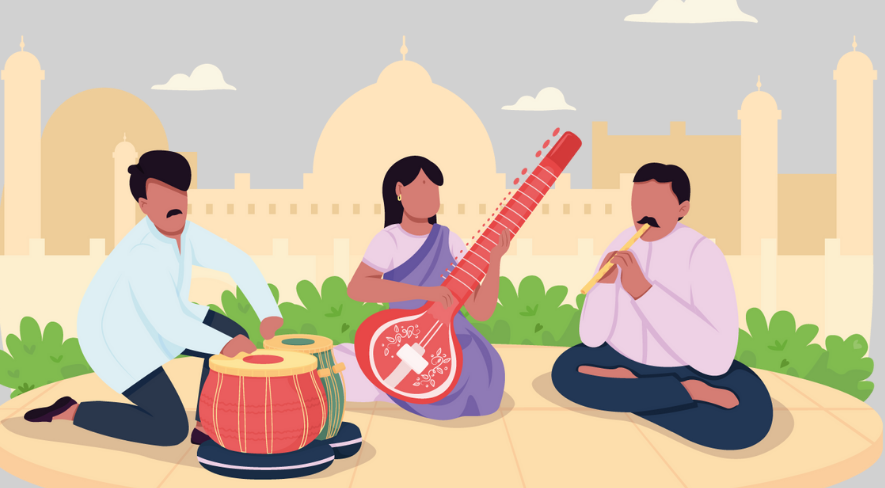Picture playing any string instrument in an empty room. Imagine it vibrating the air at a specific frequency, the music flying through the air, reaching your ears, moving some liquids in there, and firing up the same vibrations in the neurons of your brain. It is a classic example of how music “colours the mind”.
Inspired by the Indian Raga (known as ‘rag’ in northern India and ‘ragam’ in southern India), this phrase has its origins in the Sanskrit language. “Raga” literally means “colour” or “passion” in Sanskrit. Functionally, it is a melodic framework used for improvising and composing Indian classical music.
Musical notes follow a scale in a raga, with a given set appearing in a standard order. Going from note to note, weaving melodies, and emphasising specific musical motifs create an atmosphere or mood unique to the raga in question. This is called the ‘rasa’.
Many Indian ragas are said to have healing properties for the singers and audiences. For instance, the Sahana raga is a panacea for mild ill-health, Todi as the relief of severe sinus headaches, and Carnatic ragas like Bharavi and Athana as the restorers of spirit and energy.
Historically, ragas were time-specific as we classified them according to seasons of the year and times of the day. For example, Raga Basant and Bahar traditionally got rendered during the vasant ritu (spring season). So, most classical music concerts in February and March featured these ragas, individually or as a combination of the two. Nowadays, this custom is fading away, perhaps due to our changing lifestyles and a general disconnect from nature in urban settings.
Although there are about a hundred ragas in Indian classical music, some prominent ones have seasonal associations. Here are six such ragas from the North Indian tradition:
- Bhairav (Dawn): Suggesting a peaceful mood and devotional attitude
- Hindol (Spring, Morning): A raga that personifies love; its structure imitates a swing
- Megh (Monsoon): A pacifying raga earlier used to welcome the clouds and form an invitation to the rainy season
- Shri (Dusk): A raga full of grace, majesty, and dedication, used in evening prayers
- Deepak (Evening): The raga having the power to create heat and fire, also featured in a famous story where Tansen is forced to sing it in Akbar’s court
- Malkauns (Winter, Late Night): A soothing raga believed to be a creation of Goddess Parvati
The seasonal thinking about music is universal. Legendary Italian composer Antonio Lucio Vivaldi created the “The Four Seasons” set. Each production is a musical expression of a season of the year.
In Indian classical music, the ragas serve as the backbone of the nuanced vocabulary, the stipulated notes strung together, and the distinct melodic phrases constructed. And each melody is intended to convey a unique idea to the listener.
Curated by Arushi Sharma, this article originally appeared in the Music edition of The Plus magazine.

